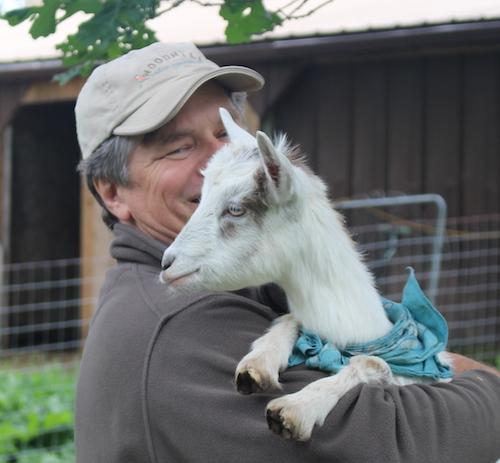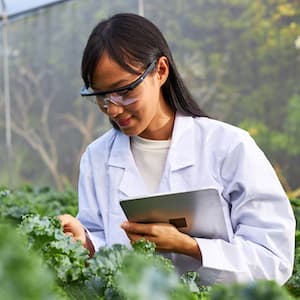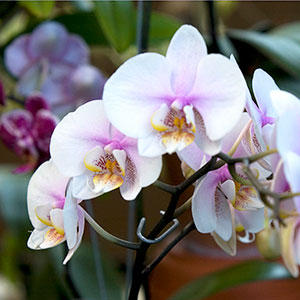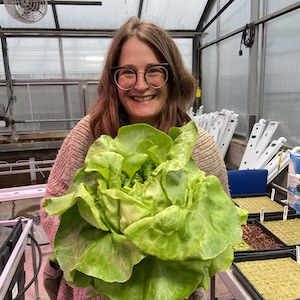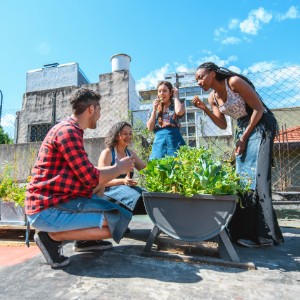Dan Halsey
Dan Halsey had a successful career for many years as a food photographer for magazines, advertisements, and other publications. But when he decided to return to school and finish the degree he started in the 1970s, he found his educational interests had shifted… so he dropped the academic study of photography—and kept the food.
“I have always been interested in edible plants, and, eventually, the ideas of ‘permaculture,’ and ‘polyculture.’ I am very interested in the issues of sustainability, landscape architecture, and the edible forest garden—the pinnacle of low-input, high-output food production.”
Halsey obtained an undergraduate degree focusing on temperate polyculture design, and then his Master of Professional Studies in Horticulture, both through the College of Continuing & Professional Studies. The degrees helped him to formalize what he had learned in his own practice of permaculture on his 25-acre property in the south metro area. They also allowed him to take his knowledge and teach it to others.
Putting It into Practice
Much of what is out there about permaculture and polyculture agriculture can be subjective. “There are theories and stories of what worked for one person and one place—which, of course, will not work for everyone. I wanted to be able to give it an academic support system and develop a language and symbolic system for it so I could communicate plant relationships and articulate my design ideas.”
He adds, “credentials give you credibility. You don’t get to this level by anecdotes in academia. I’ve learned a lot in my degree programs, and now I am teaching it.”
What exactly is permaculture? And polyculture?
Permaculture is a term used to describe an overall ecological design system. Facets include building natural homes, growing our own food, restoring diminished landscapes and ecosystems, catching rainwater, and more. Practitioners of permaculture, Halsey explains, can make use of polyculture design to grow their own food in an efficient, sustainable way.
Polyculture is a form of agriculture that mimics natural ecosystems by allowing multiple crops and livestock to thrive in the same space. It includes companion planting, beneficial insectary plants, and multicropping, and has several benefits over traditional monoculture agriculture (what we typically think of as western-style farming). Monoculture farming requires fertilization and mechanization to produce a viable crop, and then demands additional intervention to harvest, package, and ship the crop—all of which use fossil fuels and deplete the soil and the land. Polyculture is self-renewing, self-fertilizing, and helps restore the soil. It is also more pest- and disease-resistant. In addition, the greater variety of crops provides habitat for more species, increasing local biodiversity.
Says Halsey, “In ‘Big Ag’ farming, and even in small-scale gardening and landscaping, the land is something to be dominated and subdued, forced to produce and be managed for the sole purpose of man’s desire…When I work with property owners, I spend a lot of time teaching them to read the land, listen to the land, and observe what it has to offer. If they take the time to assess it, everyone’s yard can be transformed into an edible forest garden.”
Spreading the Philosophy
Halsey not only practices permaculture and polyculture design on his own property, he also hosts internships there, as well as teaches horticulture design at the University of Minnesota and American University in Beirut, Lebanon through the U.S. Agency for International Development (USAID). His company, SouthWoods Homestead and Ecological Design, provides site assessments and homestead design for farms across North America and the tropics, including systems for both residential and commercial food production.
"The beauty of polyculture design is its simplicity and adaptability."
“Permaculture is scalable. You can design something to fill a one-acre yard, or a 30-acre-plus farm…or a small keyhole garden on a city lot. Through companion planting and healthy soil, you can grow lots of food in containers and raised beds in a small space.”
He concludes, “a successful garden doesn’t have to be square. It doesn’t need rows and lines. What it needs is for the landowner to really take a good look at what they have available to them, and what types of food products will flourish. We have to change our tastes to match the land—not force the land to meet our tastes.”
By Megan Rocker, with additional writing by Mia Boos
